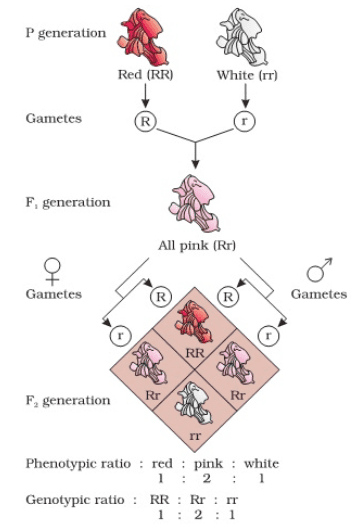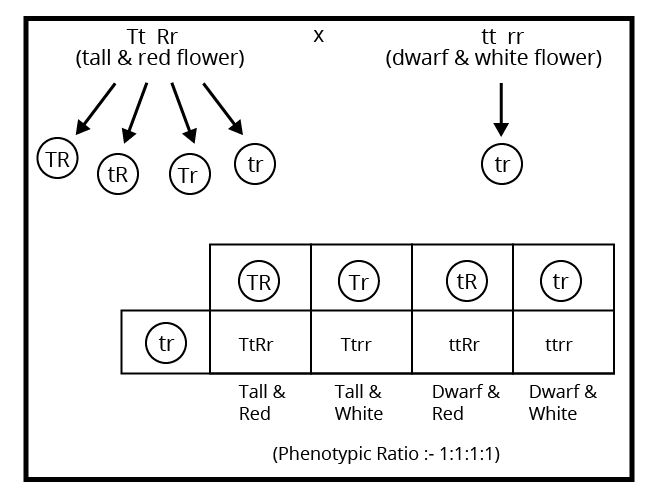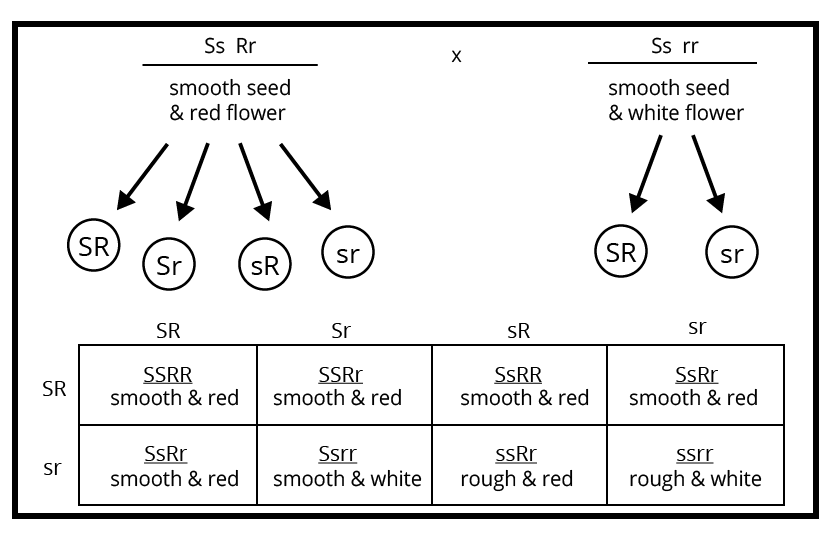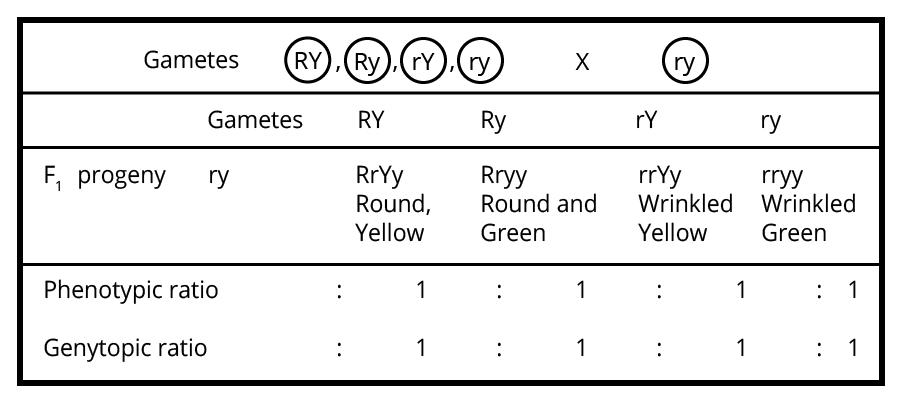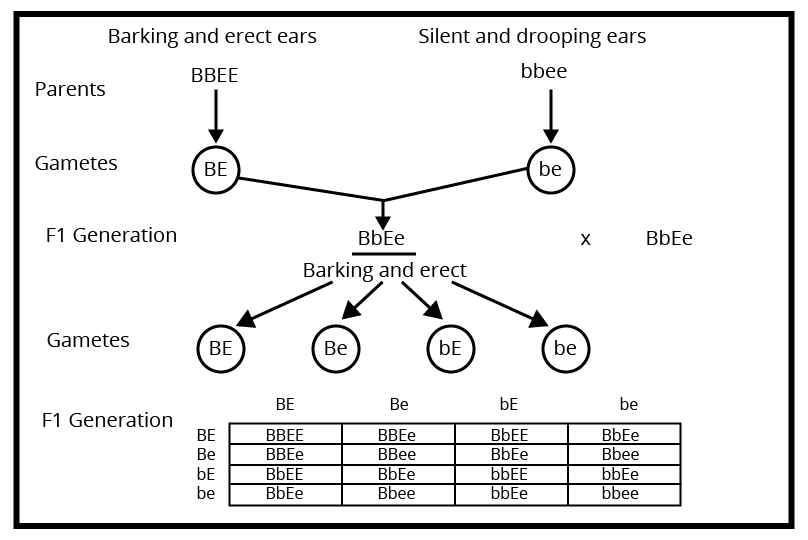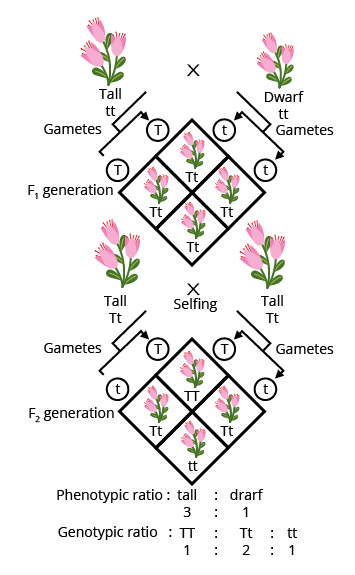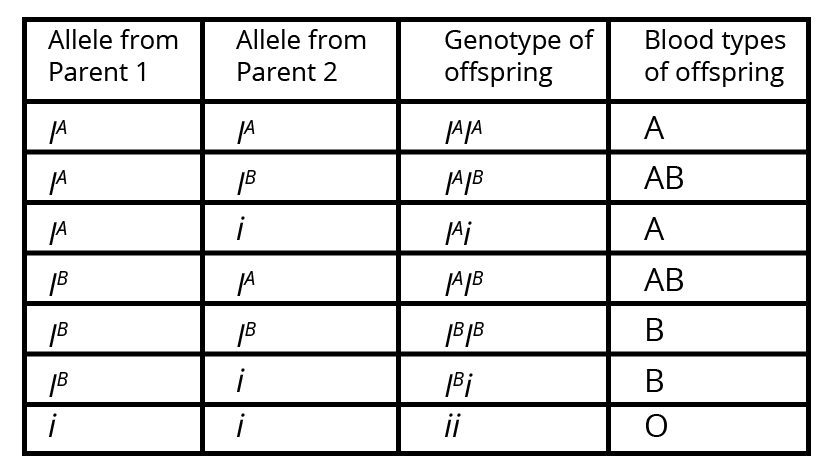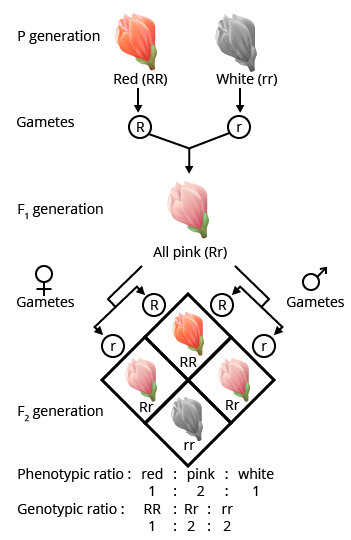Crucial Practice Questions for CBSE Class 12 Biology Chapter 4: Principles of Inheritance and Variation


FAQs on Important Questions for CBSE Class 12 Biology Chapter 4 - Principles of Inheritance and Variation 2024-25
Q1. Why did Morgan choose Drosophila as the Experimental Material for his Studies in Genetics?
Ans: The reasons for Morgan choosing Drosophila as the experimental material for conducting studies in genetics include:
Drosophila has a very short life cycle of only two weeks
It can be easily grown under laboratory conditions
In a single mating, Drosophila can produce a large number of offsprings
Drosophila comprises of only four pairs of chromosomes that are distinct in size and shape
The male and female Drosophila display a wide range of heredity variations
Q2. What are the differences between Klinefelter’s and Turner’s Syndrome?
Ans: Both Turner’s and Klinefelter’s syndrome display anomaly in the number of sex chromosomes. However, there are certain differences between the two syndromes that are highlighted below.
Turner’s syndrome is characterised by the deficit of an X chromosome. This occurs in female individuals and the total number of chromosomes in the individual is 45. Turner’s syndrome is denoted by 45, X0.
Klinefelter’s syndrome, on the other hand, is the presence of an extra X chromosome in males. The individual affected here is male and the total number of chromosomes is 47. This syndrome is denoted by 47, XXY
Q3. Why does the Human Male never Pass the Gene for Haemophilia to his Son?
Ans: Haemophilia is an X-chromosomal genetic disorder, i.e., the haemophilic gene on humans is present on the X chromosome. This disorder impairs the ability of the human body to clot blood, in case of an injury. A human male has only one X chromosome, which is inherited from the mother during the process of reproduction while the Y chromosome is obtained from the father. As such, the human male the X chromosome on to the daughters, (characterised by XX) but never on to the sons (characterised by XY).
Q4. Why should you refer to important questions of Biology Class 12 Chapter 4 by Vedantu?
Ans: The Class 12 Biology Chapter 4 Principles of Inheritance and Variation Important Questions by Vedantu have been handpicked by the subject experts. While studying the chapter or undergoing a quick recap before the exams the important questions of Biology Class 12 Chapter 4 can prove to be highly beneficial. These important questions encompass all the important topics of the chapter. Moreover, the important questions have also been arranged according to the marks they carry and provided with adept answers. So, go through the important questions of Class 12 Biology Chapter 4 today!
Q5. How are the alleles of a gene different from each other? What is its importance?
Ans: As discussed in Chapter 4 Principles of Inheritance and Variation of Class 12 Biology, the pair of alleles of a gene are different from each other even though their difference is not observed in the phenotype or the traits such as blood type and eye colour. The difference is very minute in the form of the absence or presence of a molecule (mutations in a segment DNA). The Alleles are significant because it is through their presence that variations are visible in organisms.
Q6. What is the study of inheritance and variation called?
Ans: The chapter discusses that the study of inheritance and variation is called Genetics. In simple words, one of the aspects of genetics involves the scientific study of variations that are inherited from the parent to the progeny. The concept of inheritance and variation can be understood with the help of a common example. Many times we notice that children have several features that are similar to their parents because they have 'inherited' these features from their parents. Similarly, the children don't look exactly identical to their parents because of a 'variation' in their genes.
Q7. How far are the genes and environment responsible for expression of a particular trait?
Ans: The chapter explains that both the genes and environment are responsible for the expression of traits. The inherited genes act as messages in our DNA which play a major role in determining the traits of an individual and the expression of these traits. Similarly, environmental factors such as food, temperature, humidity levels, oxygen, light etc. influence the expression of the traits present in an organism's genes. The environmental factors also affect an animal's phenotype or observable traits such as blood type, height and eye colour.
Q8. What is variation according to Chapter 4 Principles of Inheritance and Variation of Class 12 Biology?
Ans: As discussed in the chapter, the organisms, even from the same species are not identical and have several differences in physiology, genetics, behavioural traits, and so on. These differences that make the progeny different from the parent within the same species is referred to as Variation. Thus, in simple words, Variation is the process through which characters are passed to the progeny from the parent. Variation occurs due to several reasons such as environmental factors, reshuffling of genes, mutation and recombination.
These solutions are available on Vedantu's official website(vedantu.com) and mobile app free of cost.
Q9. What are the important questions of Chapter 4 Principles of Inheritance and Variation of Class 12 Biology?
Ans: You can access important questions of Chapter 4 Principles of Inheritance and Variation of Class 12 Biology by referring to Vedantu's Important Questions for this chapter. By thoroughly preparing these questions, you will be able to cover the most important topics of the chapter and score well. These questions have been prepared after analyzing the previous year questions and the latest syllabus. Thus, these questions will help you to clear the Biology exam with flying colours.
























